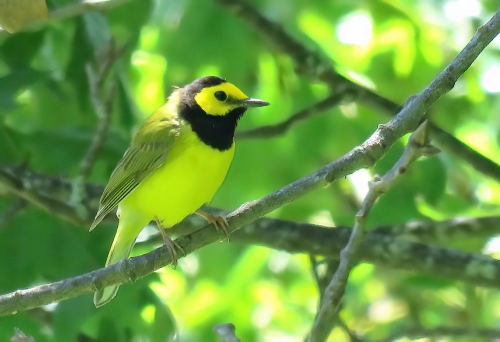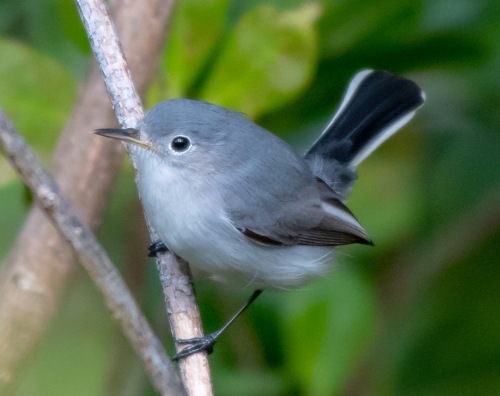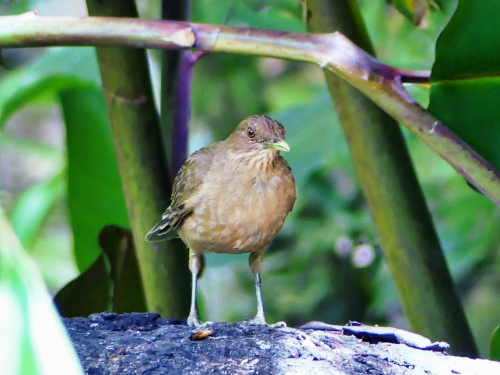First Confirmed Breeding Record for Virginia Rail (Rallus limicola) in Forsyth County, North Carolina
Ann Blue Robertson
Annbluebird2730@gmail.com
The Muddy Creek Greenway south of Robinhood Road/Jamison Park is an eBird Hotspot in Winston-Salem, North Carolina (Forsyth County). The trail borders Muddy Creek and winds through a mix of woodlands and open areas including open ditches and brushy habitat. It is known for attracting a variety of sparrows including, seasonally, White-crowned, Grasshopper, Vesper, Field, Savannah, and Swamp. Lincoln’s Sparrow has been documented as well.
On Thursday evening, April 13, 2023, David and Susan Disher visited in search of interesting sparrows. They were walking along the back fence of the dog park when they were startled to see two adult Virginia Rails. The Dishers’ eBird checklist, which includes photographs and audio files, includes the following written description: “small dark reddish-brown rails with gray faces and fairly long bills. Heard and seen. First saw one in grass on east side of the dog lot. Recording and poor photos.”
In the ensuing ten days, about 30 birders posted on eBird that they saw or heard one or two adult Virginia Rails along the marshy ditch near the dog park. Many of the checklists include photos or audio files.
I visited the site on April 18, 2023. I did not see the rails, but I did note the needle rush (Juncus sp.) that was growing along the shallow, water-filled ditch where the rails had been seen and heard. Marbry “Hop” Hopkins was also there, and we speculated that this widespread marsh grass was familiar habitat to the rails, making it a good stopover area. No one yet had any idea the rails might be nesting.
On Sunday, April 23, 2023, young birder Jesse Haaf texted a photo of a recently deceased rail chick to me with the following message: “Ann, I believe this is a baby Virginia Rail. I found it at the corner of the dog park.”
The next day, Monday, April 24, 2023, Jessica Tate, MD, and I visited Muddy Creek in the early afternoon hoping to collect the chick. Miraculously, it was still there. Jessica scooped up the little rail and examined it for trauma. She concluded that it had most likely encountered a canine, given the proximity to the dog park, although possibly a human had stepped on it. I contacted Chris Marsh, PhD, who took the body and froze it pending delivery to the N.C. Museum of Natural Sciences in Raleigh, where it is now specimen NCSM 28377.
The last documented sighting of Virginia Rail during the breeding season was on May 5, 2023, when Jesse Haaf saw one adult Virginia Rail fly up from the ditch.
Curious on the rarity of the breeding record, I consulted the online website Birds of North Carolina: Their Distribution and Abundance, which notes that Virginia Rails in the Piedmont are “rare to locally uncommon transients”. There was a comment that Virginia Rails “possibly bred near Winston-Salem in 1985.” I then emailed Harry LeGrand, the owner of this portion of the NC Biodiversity Project, asking if he had more information on the 1985 occurrence near Winston-Salem. He wrote that “possible breeding” may have been overstated and sent a link to The Chat, Winter 1986, Briefs for the Files. For Virginia Rail, it read: “an adult seen at a golf course in Winston-Salem, N.C. on 19 and 21 July by Kim Spear and Richard Page.”
Since the 1985 sighting was not conclusive of breeding, I believe that this spring 2023 recovery of a recently fledged chick constitutes the first documented successful breeding record of Virginia Rail (Rallus limicola) in Forsyth County, North Carolina.
Virginia Rail breeding range in the Eastern United States is generally along the immediate Atlantic Coast from North Carolina northward, and inland across the Northeast, Midwest and Great Plains, generally north of 38° latitude, with occasional breeding records inland and further south, for example the Burke’s Garden area in Tazewell County, Virginia.
Literature Cited
eBird. 2023. eBird: An online database of bird distribution and abundance [web application]. eBird, Cornell Lab of Ornithology, Ithaca, New York. Available: http://www.ebird.org.
LeGrand, Harry E. Jr.. 2023. Birds of North Carolina: Their Distribution and Abundance. Virginia Rail (Rallus limicola). http://ncbirds.carolinabirdclub.org/view.php?species_id=221. (Accessed: August 10, 2023).
LeGrand, Harry E., Jr. 1986. Briefs for the Files. Chat 50:24.
This article was originally published in The Chat, the Quarterly Bulletin of Carolina Bird Club, Inc., in the Fall of 2023 and appears here with permission.


























































































